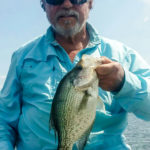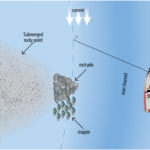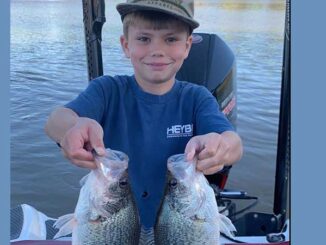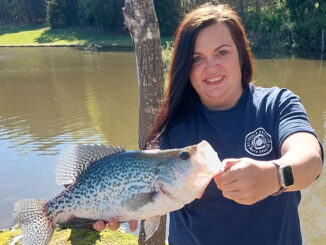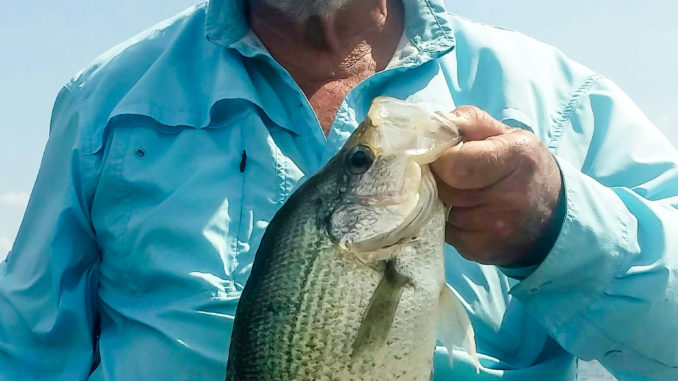
It’s no secret that Kerr Lake’s status as a flood-control reservoir makes it subject to excessive pooling during wet seasons, but since Lake Gaston downstream began furnishing water to the Virginia Beach area in 1998, Kerr also has the potential to see major drawdowns in summer droughts.
Rather than lament the inevitable, guide Keith Wray relishes the opportunity to forge upstream to the lake’s headwaters to tackle his favorite rock piles when the going gets tough.
“Every year is different,” said Wray. “If they draw the lake down 5 or 6 feet in July, the current will come out farther into the lake, and a lot of crappie will move up into it. You can go upstream, closer to where the river’s coming in, and catch crappie 8 feet deep in 90-degree water.
“The current brings more food to them, and it’s better oxygenated. Most of my productive rock piles are between Clarksville and Buffalo Creek.”
Noting the crappie’s desire to use the flow to its advantage, yet address its need to rest out of it, Wray said that fish gang up in good in the pile’s lee while awaiting delivery.
“They’ll school up big time,” he said. “You can catch 50 to 75 in one place.
“The rock piles are natural formations; area’s that are scoured by the current. You’ll have a rock point that comes out to about 12 feet deep and has a pile of rocks on it that rises to 10 or 8 feet from the surface before it drops off into the river channel.
“It’s considerable current. You can throw out a marker buoy and see the little whirlpools around it from the moving water. We cast 1/8-ounce jigs upcurrent so that it sweeps over the rock pile.”

